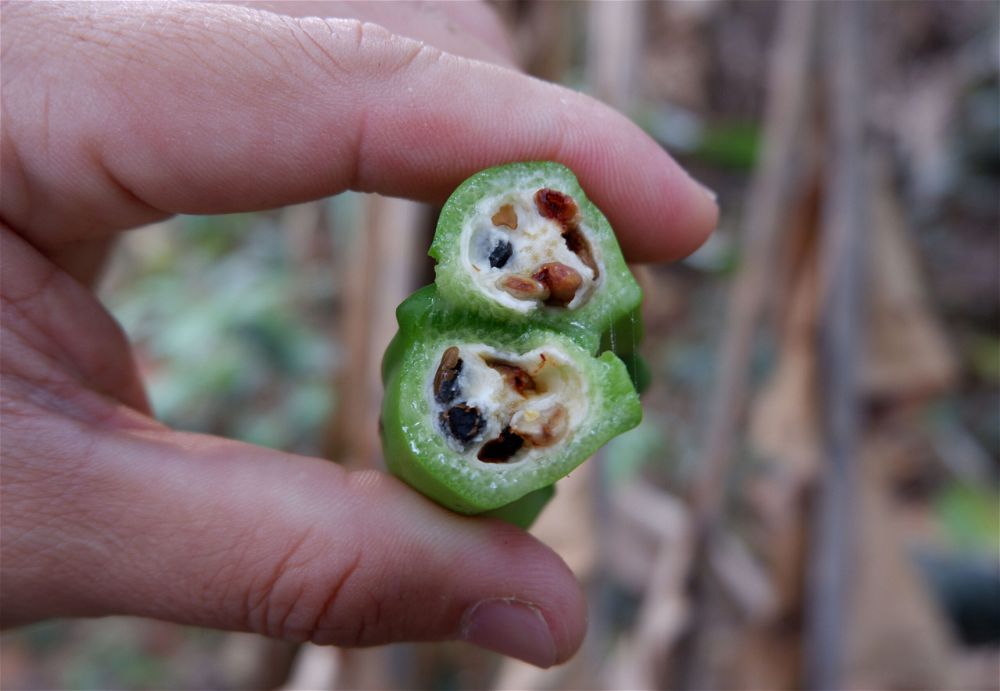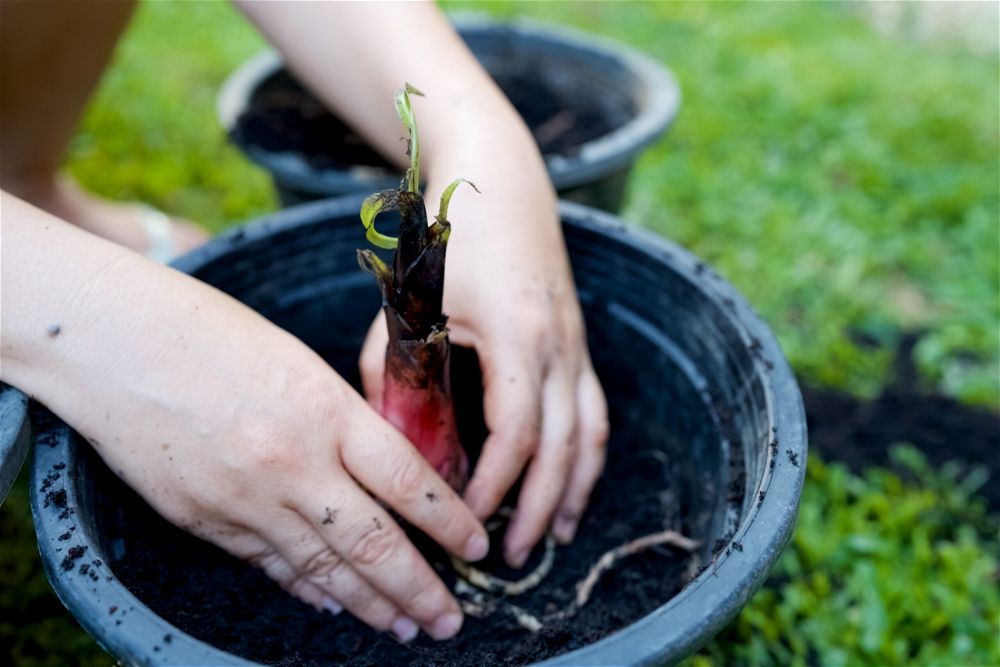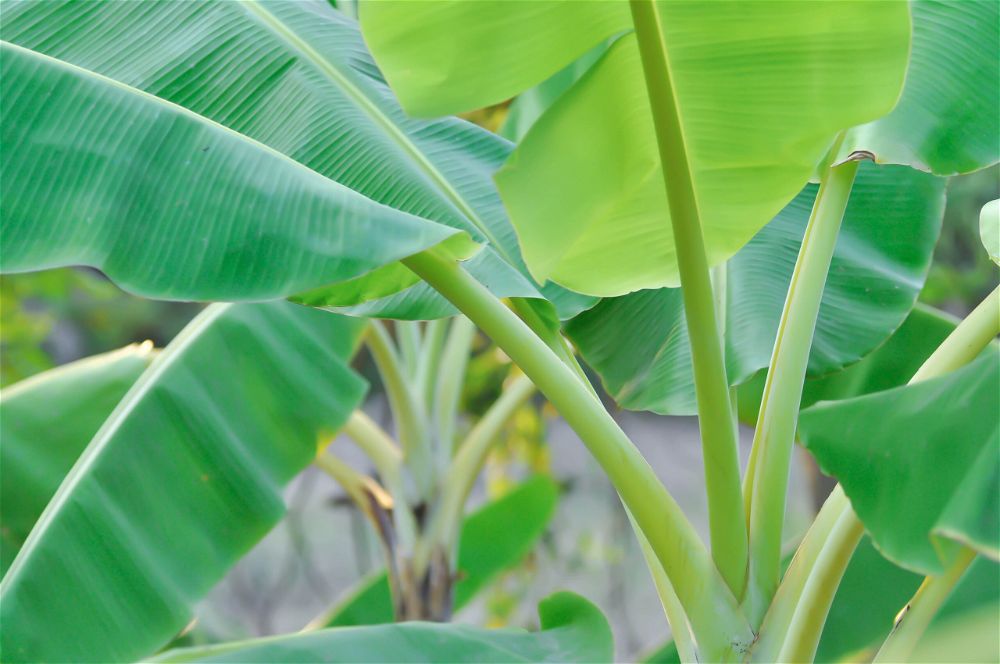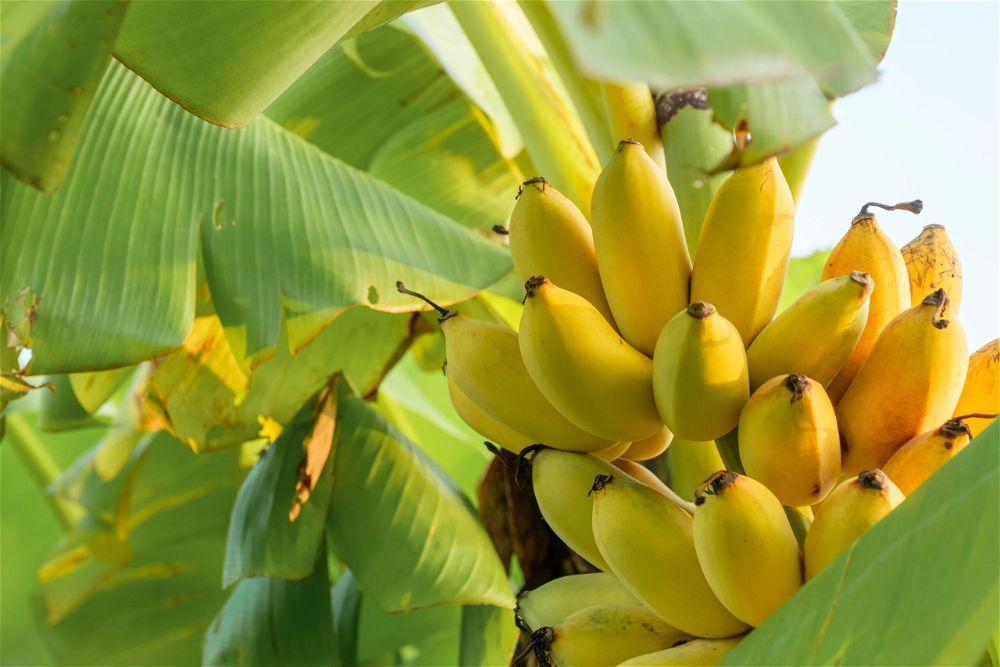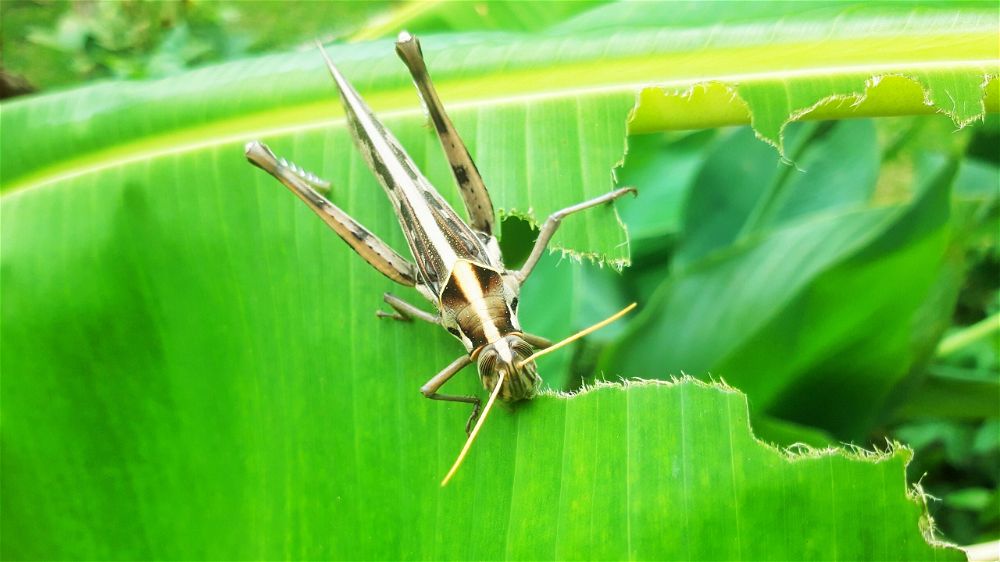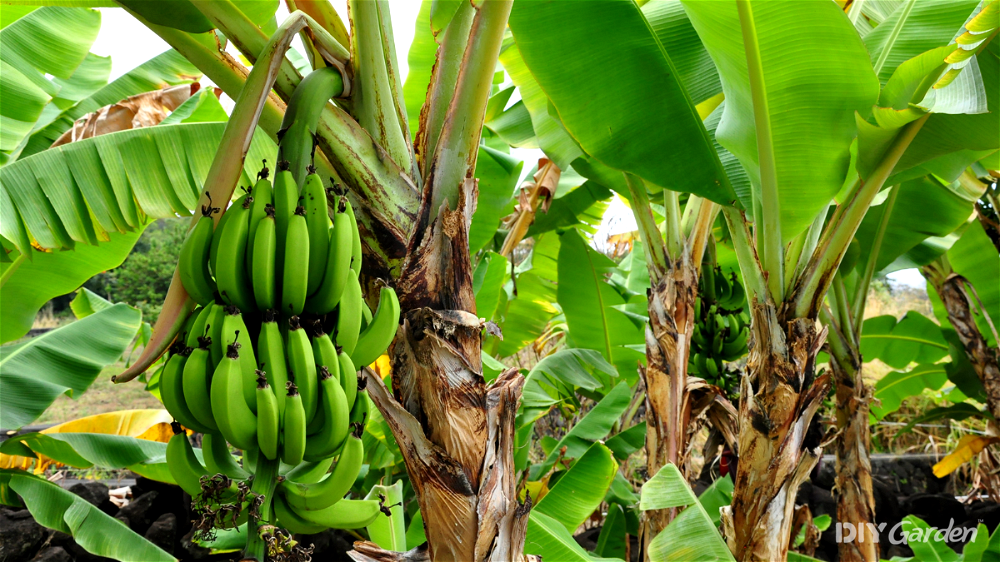
Growing a banana tree in the UK presents a unique set of challenges due to the country’s cooler climate, which is less than ideal for a plant that thrives in tropical conditions.
However, with the right care and conditions, it is possible to grow banana plants even in the UK.
Here is a simple step-by-step guide to help you through the process:
How to Grow Your Own Banana Tree
1. Choose the Right Variety
- Opt for a cold-hardy banana variety such as Musa Basjoo, which is the most common type grown in the UK. It can tolerate temperatures down to -6°C (21°F) once established.
2. Start Indoors
- Begin by starting your banana plant indoors if you’re planting it from a seed or a small plant. Early spring is the best time to start. Use a well-draining, rich potting mix in a pot with drainage holes.
3. Provide Adequate Light and Warmth
- Banana plants require a lot of light and warmth. Place your plant near a south-facing window where it will receive plenty of sunlight. Consider using a grow light if you don’t have enough natural sunlight.
4. Watering and Humidity
- Keep the soil consistently moist but not waterlogged. Banana plants love humidity, so misting the leaves daily or using a humidifier can help mimic their natural environment.
5. Fertilize Regularly
- Use a balanced liquid fertilizer once a month during the growing season (spring and summer). In the autumn and winter, reduce feeding to once every other month.
6. Transition to Outdoors
- Once there’s no risk of frost, typically late May or early June in the UK, you can move your banana plant outdoors. Acclimate it gradually to outdoor conditions over a week or two to prevent shock.
7. Choose a Sheltered, Sunny Spot
- Select a sheltered spot in your garden that receives full sun for most of the day. The location should protect the plant from strong winds, which can damage the leaves.
8. Planting Outdoors
- Dig a hole twice as wide and as deep as the root ball of your plant. Mix in some compost or well-rotted manure to enrich the soil. Plant your banana, backfilling the hole with soil, and water it thoroughly.
9. Mulch and Protect
- Apply a thick layer of mulch around the base of the plant to retain moisture and protect the roots from temperature extremes. In the winter, you may need to wrap the stem with horticultural fleece or use a straw mulch to provide extra protection against freezing temperatures.
10. Winter Care
- For varieties that are less cold hardy, you might need to dig up the plant and overwinter it indoors in a cool, frost-free place. Alternatively, you can grow your banana plant in a large pot and bring it indoors during winter.
11. Pruning
- Remove any dead or damaged leaves regularly. After the banana plant flowers and produces fruit (which may be unlikely in the UK climate), the main stem will die. Cut it back to encourage new suckers (baby plants) to grow.
Growing Banana Trees: A Quick Snapshot
Required Temperature: 15-30ºC
When to Sow: Mar-May
When to Plant: Feb-Apr
When to Harvest: Aug-Oct
Average Yield per Plant: 25-40kg (200-240 bananas)
Spacing: 2-3m
Depth: 40cm
How to Grow a Banana Tree at Home
Although they may be referred to as trees, banana trees aren’t actually trees at all – technically, they’re a perennial herb. A member of the ginger family, it takes approximately nine months for a banana plant to produce edible fruit and it needs pretty consistent conditions during this time in order to do so.
Growing Conditions for a Banana Tree
Temperature and humidity are key when growing banana trees. If you want your banana plant to produce fruit, then it will need to be kept at a consistent temperature of between 15-30ºC. While the plants can handle extreme heat, they usually stop growing if temperatures drop below 14ºC. Needless to say, the foliage isn’t frost-hardy, although the rhizome that lives underground can survive cold winters and will produce new growth come spring if undamaged.
In terms of humidity, a consistent 50% is ideal.
You’ll also need a sunny and sheltered spot to grow your plants in. Banana trees do best in full sun, but their leaves are susceptible to wind damage. Growing several plants in a block mimics the plant’s natural jungle environment and will enable the plants to protect each other. This also provides a very effective windbreak for whichever part of the garden your plants are in.
Although this guide will cover all of the ways you can grow a banana tree, growing these plants in a heated greenhouse is the best option if you want them to yield fruit in the UK.
How to Grow a Banana Tree From Seed
Commercially grown bananas are seedless, meaning that they can’t be grown from seed. Even if you do find tiny seeds in a banana you’re eating, these usually won’t come to anything when planted.
That said, wild banana varieties can be grown from seed. The fruits are sweet in flavour but contain a large number of hard seeds, resulting in a hard-to-chew texture that puts many people off.
However, if you do choose this route, you’ll need to begin by soaking your seeds in water for 24-48 hours to break their dormancy. Then, fill a seed tray with a 50/50 mix of organic compost and sand, and sow your seeds 6mm deep. Water the soil to moisten it and then make sure that it stays this way – banana seeds do best in consistently damp conditions.
You’ll need to keep your seed tray in an area that receives a temperature of at least 15ºC. Warmer would be better, so reach for your heated propagator if you have one. That said, some varieties prefer fluctuating temperatures – warmer in the daytime and cooler at night – so do some research into the variety that you’re growing.
Again, variety determines germination speed. Some take just 2-3 weeks to sprout, while others can take a couple of months.
Keep in mind that growing a banana plant from seed means that you’ll need to wait at least a couple of years before your first harvest. This is why many people choose to purchase a mature plant instead.
How to Plant a Banana Tree Outside
Once you’ve chosen a sunny yet sheltered spot in your garden, dig a hole that’s double the size of your plant’s root ball. Make sure that there’s plenty of drainage – although banana plants need a good amount of moisture, they’ll rot if excess water isn’t able to properly drain away. Adding some perlite to your soil can help to improve drainage.
If you’re planting more than one banana tree, check to see the size your variety grows to in order to determine spacing. 2-3 metres between each plant is usually recommended.
On the other hand, if you’re planting a single banana plant, try to keep it at least 4-5 metres away from any other trees or shrubs growing in your garden. This will help to ensure that they don’t compete with your bananas for moisture or nutrients.
Once you’ve planted your banana tree, firm the soil down around its base and water it in well.
How to Plant a Banana Tree in a Pot
Unless you live somewhere that experiences nine months of warmth, then growing a banana tree outside may not be an option for you, especially if you’re hoping for some fruit at the end of your growing season.
One good alternative would be to plant your banana tree in a pot instead. This way, you can keep it outside during the spring and summer, but then move it somewhere warmer once outdoor temperatures start to drop.
Your pot will need to be at least 70 litres in size and should have good drainage holes. Use a rich potting mix and water your plant well once you have placed it into its new home.
Keep in mind that banana trees grown in pots will need extra attention when it comes to watering and feeding. You’ll also need to repot your plant every 2-3 years.
How to Plant a Banana Tree in a Greenhouse
Another option for people who live in cooler climates is to grow a banana tree in a greenhouse. If you’re concerned about size (after all, nobody wants their banana tree to end up smashing through the glass!), you could always pick a dwarf variety – these still fruit very well!
Follow the same planting rules as when planting outside. Give your plants rich compost, plenty of water, sufficient space, and lots of sun, and they should thrive in your greenhouse.
How to Care for a Banana Tree
Now for the challenging part – keeping your banana tree happy and healthy enough to produce fruit. Here’s what you’ll need to do:
Watering Your Banana Tree
Water management is often the trickiest part of growing a banana tree – under-watering will likely kill your plant, while over-watering can cause the roots to rot.
Ideally, you want your soil to be consistently damp. If the top 2cm of soil feels dry when you touch it, then this is a sign that your banana tree needs some water. You’ll likely need to water your plant relatively frequently in warmer weather, but will be able to slow down in cooler temperatures.
If your banana plant doesn’t yet have much foliage, then be even more careful when watering. Those leaves help the plant to evaporate away excess moisture – a lack of leaves could cause the plant to drown faster than it would do otherwise.
Feeding Your Banana Tree
Banana plants are heavy feeders, so you’ll need to use a fertiliser once a month to keep them happy. A balanced 10-10-10 or 8-10-8 fertiliser is best, with the amount that you use increasing as the plants grow. Once your plants go dormant for the year, you can stop fertilising until new growth begins again.
Pruning Your Banana Tree
As your banana plant matures, it’ll start to produce several suckers. These are small plants that grow from the same rhizome. If you want your plant to be as productive as possible, prune away the suckers that develop, leaving just the main stem. Keep in mind that the suckers you’re pruning off can be planted to produce a new banana tree.
Once your plant is about 6 months old, allow one sucker to develop. After your main stem has finished fruiting, it will die back and the sucker will replace it to produce your next crop.
Staking/Supporting Your Banana Tree
While your plant is growing, it’s unlikely to require staking, especially if you’ve planted it in a sheltered spot. That said, if the wind poses a problem, a couple of bamboo canes tied to your plant should hold it in place.
Once your banana tree begins to produce fruit, it will become more top-heavy. As a result, it may start to lean, and could even snap if it’s unable to support the weight of the fruit. If you notice your plant starting to lean, prop up the bananas on a long piece of wood to give the plant some extra support.
Winter Care
The winter care required by your banana plants will depend on how cold your winters get. If your winters are quite mild and temperatures don’t drop below -5°C, then your banana plants can stay outside, or in your greenhouse. However, once the foliage has died back for the year, it would still be worth covering the stem that’s left with a blanket or some fleece.
If your winters are quite extreme, then your best bet would be to dig your plants up, pop them into a pot, and keep them somewhere frost-free over the winter. You can cut your plants back before you do so – they should grow back without any problems once replanted.
How to Harvest Bananas
If you’ve given your banana tree the best conditions and care, you should notice the first purple flower appearing about six months into the growing season. Don’t be tempted to remove any of the leaves from around it, as these provide much-needed sun protection.
After a couple of months, the petals will start to withdraw, revealing the bananas within. At this point, go ahead and remove any petals or flower buds – this will enable the plant to put all of its energy into growing delicious fruits.
Once your bananas are well-rounded and have developed ribs, you can start to think about harvesting them. At this stage, the tiny flowers at the end of each banana will have fully dried – you’ll be able to just rub them off.
Bananas can be picked green – no matter their size, the ripening process will speed up as soon as they’re picked. Of course, you can wait for them to naturally ripen too. There’s no denying that this results in the most flavourful bananas, but it also means that you’ll be harvesting a large number of fruits all in one go, rather than spacing your harvest out by picking some while they’re still green. A single banana plant can produce up to 240 bananas per year, so make sure you have some storage/preservation options at the ready!
How to Store Bananas
Once you’ve picked your bananas, keep them somewhere cool – temperatures of around 12°C are ideal. Anything warmer than this will encourage ripening.
As bananas ripen, they release ethylene gas. To prevent them from ripening too quickly, you’ll need to keep this gas contained within the banana as much as possible. One way to do this is by separating each individual banana from its bunch and then wrapping it, ensuring that the stem, in particular, is well covered. Be gentle to avoid bruising the fruit (this can cause them to rot) and, if you can, store them by hanging them up.
Alternatively, bananas can also be frozen. Peel them, slice them up (or puree them), and then freeze. When prepared in this way, they’ll taste fantastic for about six months.
Common Banana Tree Problems
Banana plants are generally quite problem-free when grown at home in the right conditions. However, some issues that you could possibly encounter include:
- Bacterial leaf spot – this shows up as yellow patches on the leaves, with the leaf soon darkening and dying. It’s usually caused by excess moisture, so try to improve drainage around your plants and remove any infected leaves
- Thrips – this pest feeds on the peels and flowers of young bananas, with those areas quickly turning rough and rusty. You may also notice that the fruit is cracked or split. Natural insecticidal soaps can treat heavy infestations
- Mealybugs – this pest is most commonly seen on banana plants that are grown indoors or in greenhouses. They secrete a honeydew as they feed on the plant – you’ll notice areas of cottony wax developing, which soon turn black. A cotton swab dipped in rubbing alcohol and then dabbed onto the insects is the best way to get rid of them. You could also try an insecticidal soap but, since mealybugs have a waxy covering, you may need to spray your plants several times (and very thoroughly) in order to put a stop to the infestation.
Popular Banana Tree Varieties to Grow at Home
While there may be over a thousand banana plant varieties to choose from, the most popular for growing at home are:
- Cavendish – this is the variety that is sold in shops. The plants are very productive, with large and heavy bunches growing each season
- Lady Fingers – although often grown as an ornamental plant because of its tall and slender nature, the small fruits produced by this variety are incredibly sweet
- Musa Basjoo – also known as the cold-hardy banana or the Japanese banana, this variety tolerates temperatures as low as -14°C
- Gros Michel – many would say that this is the most flavourful of all of the banana varieties, but it does require a little extra heat in order to be productive
- Plantains – also referred to as cooking bananas, plantains have a dry, starchy flesh that enables them to be used in the same way you would a potato
Conclusion
While a banana tree may require a little more effort and attention than some of the other plants in your garden, it’s well worth it – especially if you’re a fan of bananas! Not only can a single plant produce a heavy crop of fruit, but its large leafy foliage will also add a lush tropical vibe to your garden or greenhouse.
FAQ
Can you grow a banana tree from a banana?
This will depend on the type of banana. While you can’t grow a banana tree from a regular store-bought banana, you can successfully use the seeds from a wild banana. This is because store-bought bananas don’t usually contain fertile seeds, whereas wild bananas do.
How long do banana trees live for?
The lifespan of a banana plant can vary quite a bit. Some only live for about six years, while others have been known to live for 25 years. It all depends on the variety that you’re growing, along with the growing conditions that you’re providing.
Is it easy to grow a banana tree?
Although banana trees require quite specific growing conditions, they’re actually quite an easy plant to grow. If you’re able to meet all of its needs, then this fast-growing plant should be relatively trouble-free.
Do banana trees only fruit once?
The main stem of your banana plant is where the fruit will be produced, and this stem dies once it is done fruiting. However, the rhizome of a banana plant will send up a new main stem, which, in turn, will produce its own crop of fruit. So, while each stem may only fruit once, the actual banana plant itself will crop for several seasons.
